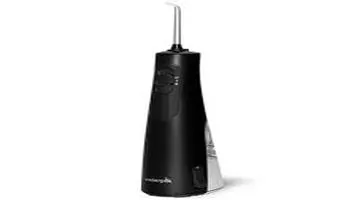The Timeless Appeal of Jeans: A Review
Jeans are a versatile and timeless piece of clothing originally designed as durable workwear for miners and cowboys in the late 19th century. Crafted primarily from denim, a sturdy cotton twill fabric, jeans are known for their comfort, durability, and casual style. Over the decades, they have evolved into a fashion staple embraced globally by people of all ages and backgrounds. Available in various cuts such as skinny, straight, bootcut, and wide-leg, jeans cater to diverse body types and fashion preferences. Their adaptability allows them to be dressed up with blazers and heels or dressed down with t-shirts and sneakers. The iconic blue hue is most common, but jeans today come in an array of colors and finishes, reflecting personal style and cultural trends.

In the ever-evolving world of fashion, few garments have stood the test of time as steadfastly as jeans. From their humble beginnings as workwear to becoming a staple in wardrobes worldwide, jeans have transcended cultural and generational boundaries. This review delves into the enduring allure of jeans, examining their history, versatility, and the latest trends that keep them at the forefront of fashion.
A Rich History:
Jeans trace their origins back to the late 19th century when Levi Strauss and Jacob Davis patented the first pair of rivet-reinforced denim trousers. Initially designed for miners and cowboys, jeans were prized for their durability and practicality. The use of rivets at stress points added strength, making them ideal for labor-intensive tasks. Over the decades, jeans evolved from utilitarian workwear to a symbol of rebellion and counterculture in the 1950s and 60s, thanks to icons like James Dean and Marlon Brando.
Versatility and Style:
One of the most compelling aspects of jeans is their versatility. They effortlessly transition from casual to semi-formal, depending on how they are styled. A pair of well-fitted jeans can be dressed up with a blazer and loafers for a smart-casual look or dressed down with a simple t-shirt and sneakers for a laid-back vibe. This adaptability makes jeans a go-to choice for various occasions, from weekend outings to casual Fridays at the office.
Jeans come in an array of styles, cuts, and washes, catering to diverse tastes and body types. Skinny jeans, once the epitome of modern fashion, have given way to a resurgence of straight-leg and wide-leg styles. High-waisted jeans, reminiscent of the 80s and 90s, have made a strong comeback, offering a flattering fit for many body shapes. Distressed and ripped jeans continue to be popular, adding an edgy, lived-in feel to any outfit.
Comfort and Fit:
Comfort is paramount when it comes to jeans. The perfect pair should feel like a second skin, allowing for ease of movement without compromising on style. Advances in fabric technology have led to the creation of jeans with added stretch, providing a comfortable fit that adapts to the wearer's body. Brands like Levi's, Wrangler, and newer entrants like Madewell have mastered the art of combining comfort with style, ensuring that their jeans remain a wardrobe staple.
Finding the right fit can be a daunting task, given the myriad options available. It's essential to consider factors such as rise (low, mid, or high), leg shape (skinny, straight, bootcut, etc.), and length. Trying on different styles and cuts is the best way to determine what works best for your body type. Many brands now offer inclusive sizing, catering to a broader range of body shapes and sizes, ensuring that everyone can find their perfect pair.
Sustainability:
In recent years, the fashion industry has faced increasing scrutiny over its environmental impact, and jeans are no exception. The production of denim is resource-intensive, requiring significant amounts of water, energy, and chemicals. However, many brands are now taking steps towards sustainability, adopting eco-friendly practices and materials. For instance, companies like Everlane and Patagonia use organic cotton and recycled materials in their denim collections. Additionally, innovations such as waterless dyeing techniques and laser technology for distressing have significantly reduced the environmental footprint of jeans production.
Consumers are also becoming more conscious of their purchasing choices, favoring brands that prioritize sustainability and ethical practices. This shift in consumer behavior is encouraging more companies to adopt transparent and responsible production methods.
The Latest Trends:
Fashion is cyclical, and jeans are no exception. While classic styles remain timeless, new trends continually emerge, keeping the denim scene fresh and exciting. In recent seasons, we've seen a return to vintage-inspired denim, with high-rise, straight-leg, and wide-leg jeans gaining popularity. The relaxed, oversized fit reminiscent of the 90s has also made a comeback, offering a casual, comfortable alternative to the skinny jeans that dominated the past decade.
Another trend making waves is the patchwork and upcycled denim movement. Designers are embracing creativity and sustainability by repurposing old jeans and fabric scraps to create unique, one-of-a-kind pieces. This not only reduces waste but also adds a personalized touch to each garment.
Conclusion:
Jeans are more than just a piece of clothing; they are a cultural icon, a symbol of resilience, and a testament to the evolution of fashion. Their timeless appeal lies in their versatility, comfort, and ability to adapt to changing trends. As we move towards a more sustainable future, the denim industry is rising to the challenge, proving that style and ethics can go hand in hand. Whether you prefer classic cuts or contemporary styles, there's no denying that jeans will continue to be a beloved wardrobe essential for generations to come.
---






